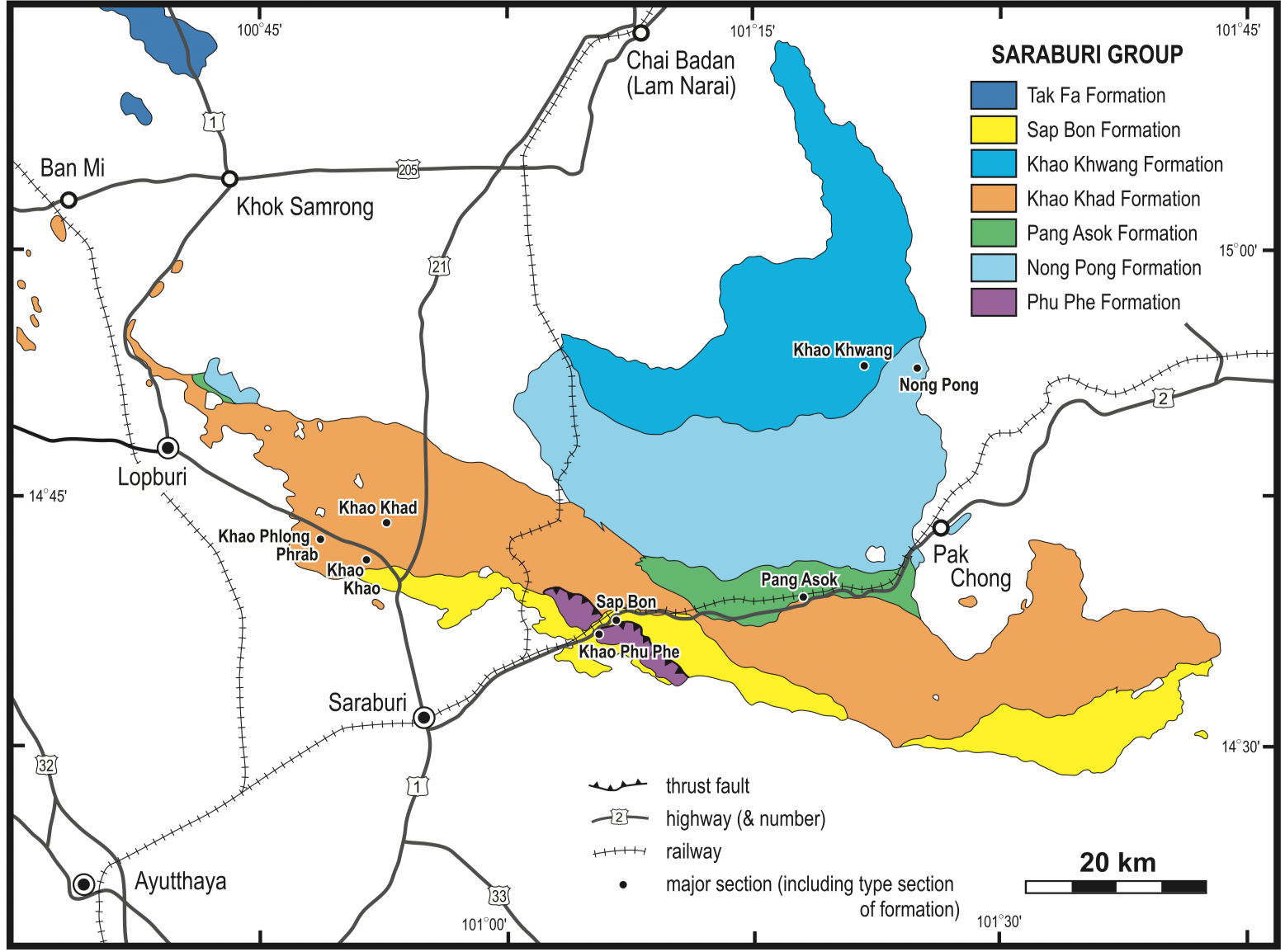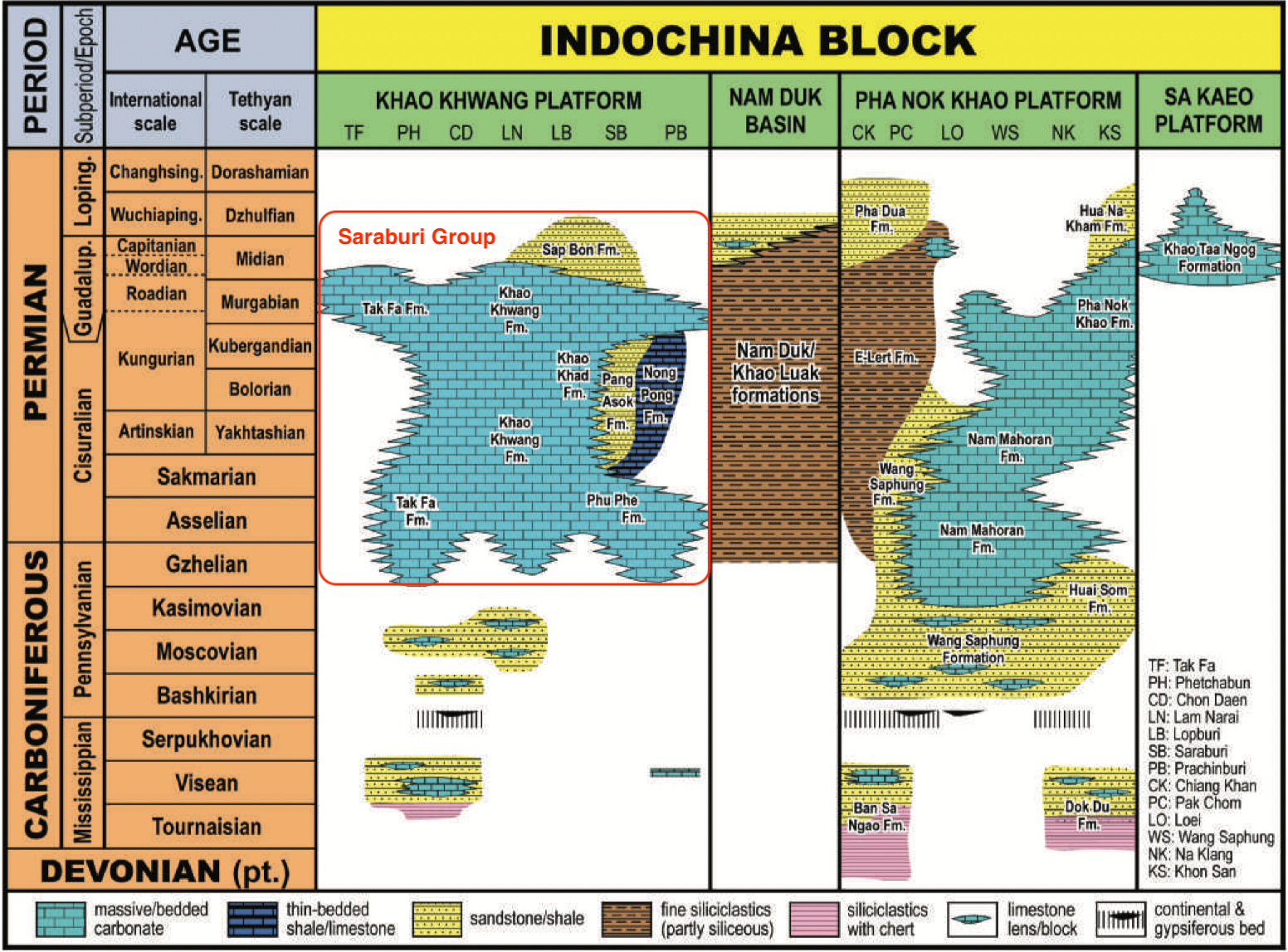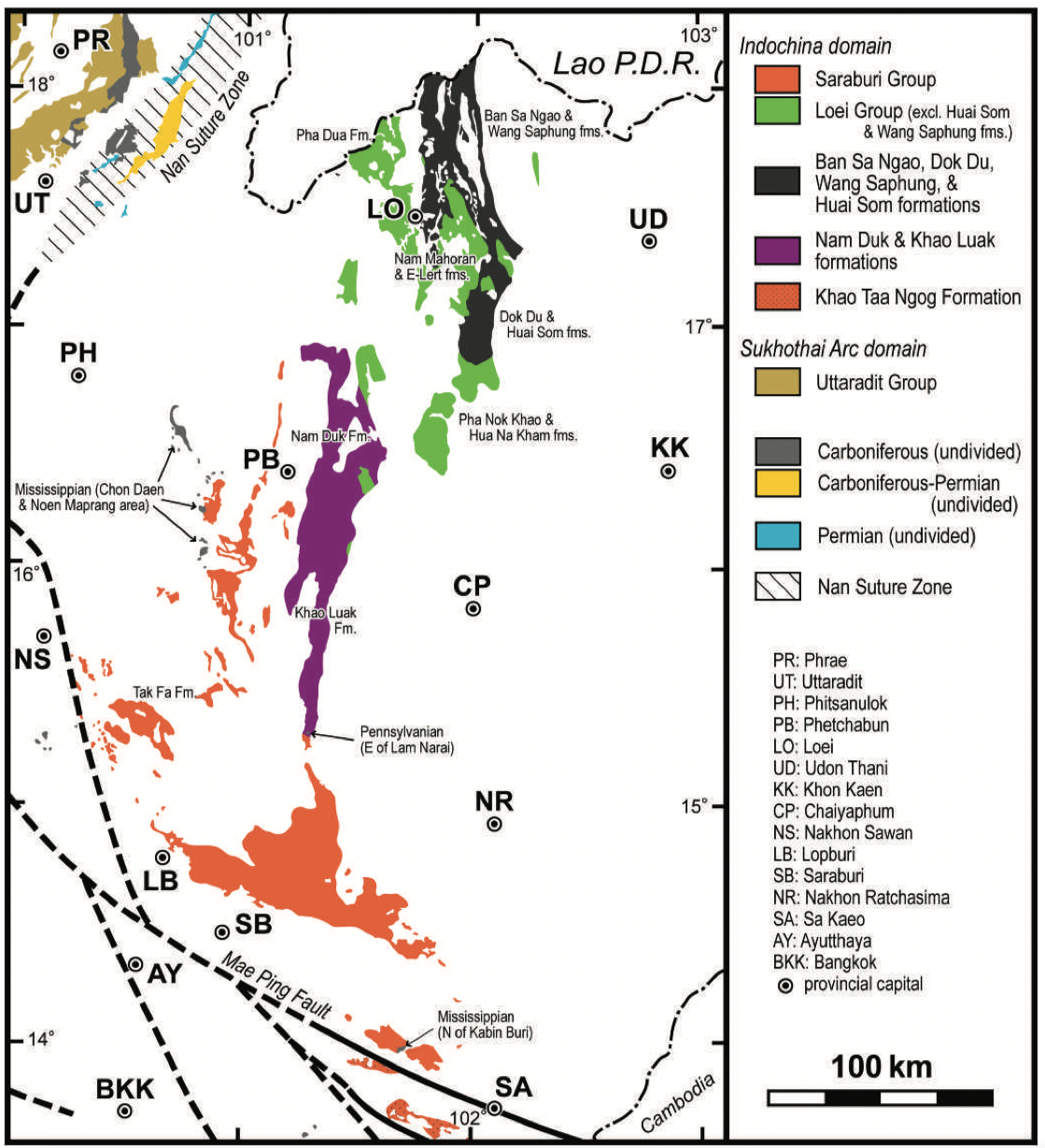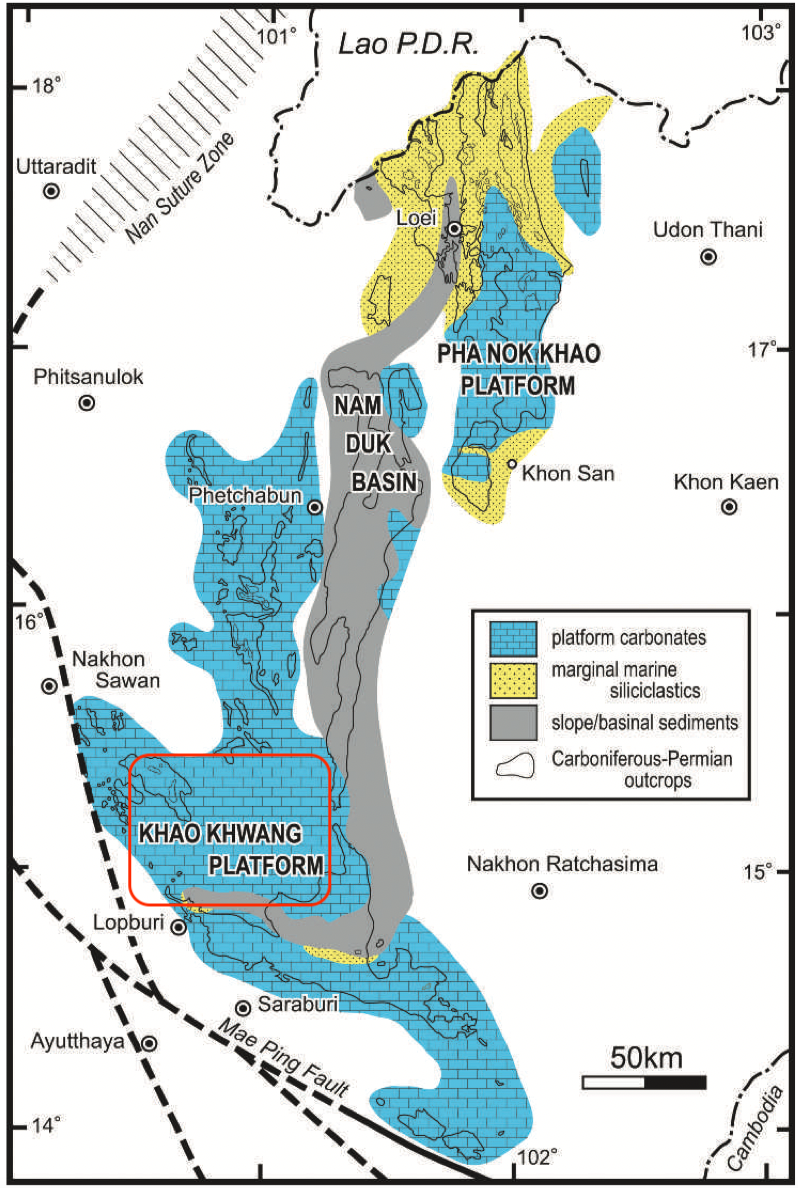Tak Fa Fm
Type Locality and Naming
Khao Kwang Platform (western region): This formation was established by Nakornsri (1976, 1981) in his geological map of Amphoe Ban Mi. The type area is at Tak Fa in southeastern Nakhon Sawan Province, but lacks a detailed stratigraphic description.
[Figure: Geological map of Saraburi Group in Saraburi area, NE Thailand (Ueno and Charoentitirat, 2011).]
Synonym: หมวดหินตากฟ้า
Lithology and Thickness
[Figure: Carboniferous and Permian facies distribution and resultant stratigraphic subdivisions on the western margin of the Indochina Block, with Saraburi Group highlighted (Ueno and Charoentitirat, 2011).]
Relationships and Distribution
Lower contact
Upper contact
Regional extent
[Figure: Distribution of Carboniferous and Permian in NE Thailand. Data mainly based on 1:1 million scale geological map of Thailand (DMR 1999) with minor modifications (Ueno and Charoentitirat 2011).]
GeoJSON
Fossils
With respect to the age of the Tak Fa Fm, the fusulines from the carbonate parts of the formation show that it ranges from the latest Carboniferous to middle or late Middle Permian, with possibly the oldest assemblage (late Gzhelian) consisting of Triticites ozawai, Daixina petchabunensis, Dutkevitchia sp. and ?Darvasoschwagerina yanagidai (LE5 of Igo 1972) and probably the youngest one (late Murgabian or early Midian) containing Sumatrina longissima (Chonglakmani & Fontaine 1992; Igo 1992) (Ueno and Charoentitirat, 2011).
Age
Depositional setting
[Figure: Late Paleozoic major facies subdivisions on the western margin of the Indochina Block by Ueno and Charoentitirat (2011). (Slightly modified from Wielchowsky & Young 1985).]
Additional Information
Ueno and Charoentitirat (2011) also regard the so-called ‘Ratburi Group’ west of the Nam Duk Basin, originally attributed to the Pha Nok Khao or Hua Na Kham formations by Chonglakmani & Sattayarak (1984), as belonging to the Tak Fa Fm.
Hinthong (1981) suggested that the formation in the type area can be lithostratigraphically correlated to the Khao Khwang Fm in the Saraburi area.
Ueno and Charoentitirat (2011) regard the Tak Fa Fm as largely time-equivalent to most of the formations of the Saraburi Gr in the Saraburi area.



